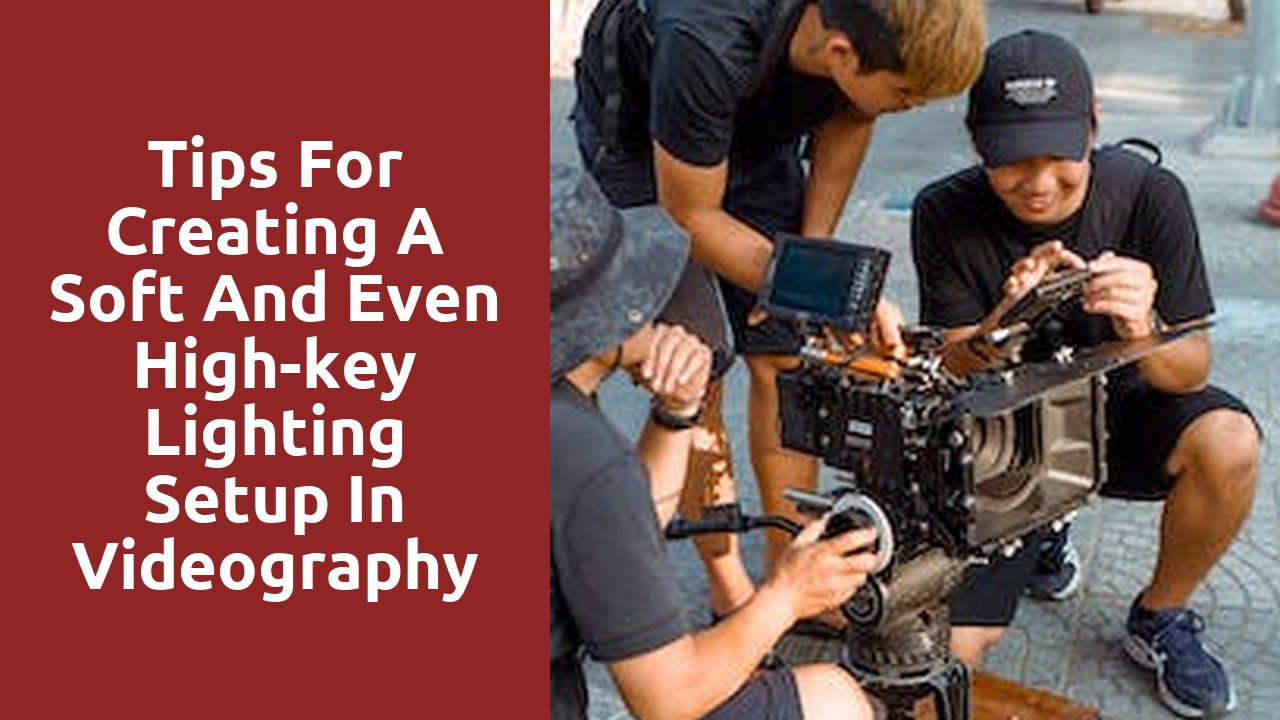
Tips for Creating a Soft and Even High-key Lighting Setup in Videography
Understanding High-Key Lighting: A Primer for Videographers
High-key lighting is a popular technique used in videography to convey a bright and cheerful atmosphere. It involves flooding the scene with sufficient light to eliminate shadows and create a soft, even illumination. This technique is commonly used in commercial shoots, music videos, and sitcoms to give a visually pleasing and polished look to the footage.
When setting up high-key lighting, it is essential to have a well-lit background to serve as a canvas for the subject. This can be achieved by using multiple light sources, such as softboxes or diffusers, to evenly distribute light across the scene. Additionally, it is crucial to carefully control the intensity of the light to ensure it does not overpower the subject but instead highlights their features without harsh shadows. By understanding the basic principles of high-key lighting, videographers can effectively create vibrant and lively visuals that captivate their audience.
Choosing the Right Equipment for a Soft and Even High-Key Lighting Setup
When it comes to achieving a soft and even high-key lighting setup, selecting the right equipment is essential. The key to achieving this look lies in using the right lighting modifiers and sources. One of the first things to consider is the type of light source you will be using. Softboxes and umbrellas are popular choices for creating soft, diffused light, while beauty dishes and diffusers can also be used to achieve a similar effect. Additionally, the size of the light source is important; larger modifiers will produce a softer light, while smaller ones will give a more focused and harsher light. Experimenting with different light sources and modifiers will allow you to find the combination that best suits your desired high-key lighting effect.
Positioning Your Lights: Key Factors to Consider in High-Key Lighting
When it comes to high-key lighting, the positioning of your lights plays a crucial role in achieving the desired effect. There are several key factors to consider that can greatly impact the overall outcome of your high-key lighting setup.
Firstly, the distance between the subject and the lights is of utmost importance. Placing the lights too close can result in harsh shadows and intense highlights, while positioning them too far may cause a lack of illumination. Finding the right balance is essential to creating a well-lit and evenly exposed scene. Additionally, the angle at which the lights are positioned can also affect the final result. Experimenting with different angles can help you achieve the desired level of brightness and eliminate unwanted shadows. By considering these factors and fine-tuning the positioning of your lights, you can effectively master the art of high-key lighting.
The Importance of Diffusion: Creating Softness in High-Key Lighting
Creating softness in high-key lighting is essential for capturing delicate and ethereal images. Diffusion plays a crucial role in achieving this desired effect. By placing a diffuser over the light source, the harsh and direct light is scattered and diffused, resulting in a softer spread of light across the subject. This softness not only enhances the overall aesthetic of the image but also helps to diminish any imperfections, resulting in a more flattering portrayal.
One of the key benefits of using diffusion in high-key lighting is its ability to minimize shadows and highlight fine details. High-key lighting is characterized by its bright and evenly illuminated nature, often used in fashion photography or to create a dreamy atmosphere. By diffusing the light, the intensity is reduced and shadows are softened, ensuring a more uniform illumination across the subject. This allows for the capture of intricate textures, subtle contours, and nuanced expressions, resulting in a more visually pleasing and captivating image.
Selecting the Right Light Source: Achieving Evenness in High-Key Lighting
When it comes to achieving evenness in high-key lighting, selecting the right light source becomes crucial. A high-key lighting setup typically involves creating a beautifully bright and evenly lit scene, often with a white or light background. To achieve this effect, the light source you choose plays a significant role in determining the quality and consistency of the lighting.
When selecting a light source for high-key lighting, one crucial factor to consider is the color temperature. A light source with a color temperature in the higher range, such as daylight or cool white bulbs, will help create a clean and bright effect. These light sources emit a bluish tone that enhances the overall brightness and evenness of the scene. On the other hand, warmer light sources with lower color temperatures may introduce a yellowish or orange tint that can compromise the desired high-key effect. Therefore, it is essential to select a light source with the appropriate color temperature to achieve the desired evenness in high-key lighting.
Balancing Exposure: Tips for Achieving Correct Lighting Levels in High-Key Videography
Creating high-key videography requires careful consideration of lighting levels to achieve the desired effect. One tip for achieving correct exposure is to use a light meter to measure the intensity of the light in the scene. This allows you to determine the proper settings for your camera and adjust the lighting accordingly. By using a light meter, you can ensure that your high-key footage is neither overexposed nor underexposed, resulting in a crisp and balanced final product.
In addition, it is essential to make use of diffusers to soften the light and reduce harsh shadows. Soft lighting can enhance the overall brightness of your footage while also minimizing any distractions caused by hard shadows. Experimenting with different types of diffusion materials, such as fabric or translucent panels, can help you achieve the desired softness in your lighting setup. By balancing the lighting levels and minimizing unwanted shadows, you can create a visually pleasing high-key videography that draws the viewer's attention to the subject without distractions.
Related Links
Step-by-step Guide to Setting Up High-key Lighting for VideographyUnderstanding the Role of High-key Lighting in Videography